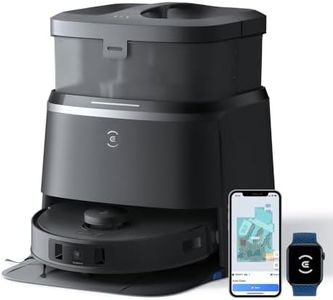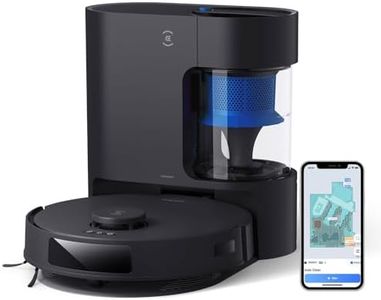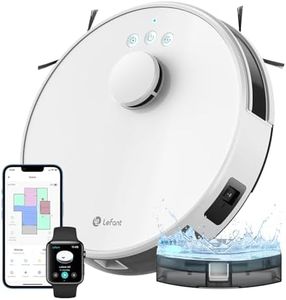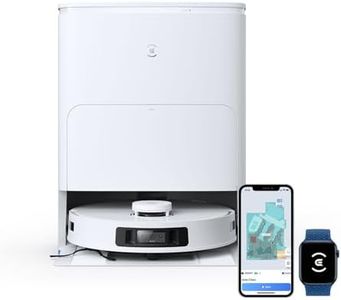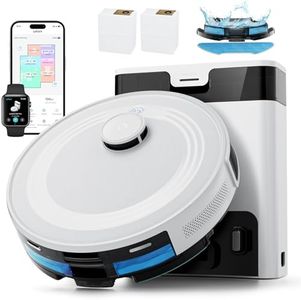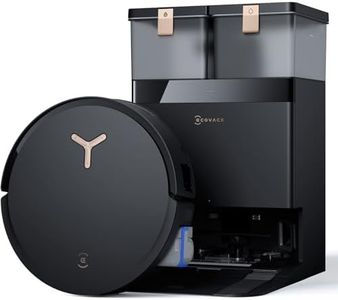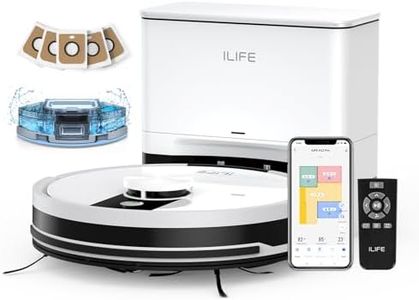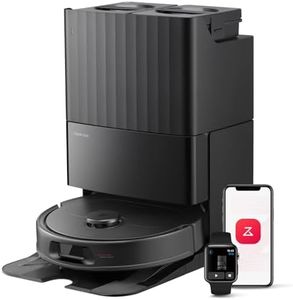We Use CookiesWe use cookies to enhance the security, performance,
functionality and for analytical and promotional activities. By continuing to browse this site you
are agreeing to our privacy policy
10 Best Robot Mop For Laminate Floors
From leading brands and best sellers available on the web.Recommended lists
Buying Guide for the Best Robot Mop For Laminate Floors
Choosing a robot mop for laminate floors can be a great decision to keep your home consistently clean with little effort. However, laminate flooring requires gentle cleaning to avoid water damage or scratches. When selecting a robot mop, you should look for features and specifications that focus on floor safety, effective cleaning, and ease of use. Understanding the key specs will help you pick a model that works best for your cleaning needs and living space.Water Tank Type and ControlThe water tank in a robot mop holds the cleaning solution or water that moistens the mop during operation. This is especially important for laminate floors, since excessive moisture can cause swelling or damage. Tanks may be fully automated or require manual filling, and some robots offer adjustable water flow. For laminate, opt for models that provide good control over how much water is dispensed, or use damp-mopping instead of wet-mopping. If you have a lot of laminate, or you’re concerned about water damage, look for robot mops with electronic or precision control of water output, ensuring the floor only gets slightly damp rather than wet.
Mop Pad Type and MaterialMop pads are what make contact with your floor and do the actual cleaning. They can be disposable or washable, and are often made from microfiber. For laminate, soft microfiber pads are ideal because they clean efficiently without scratching. Disposable pads are convenient but cost more over time, while washable pads are more eco-friendly and economical. Choose mop pads that are gentle and easy to clean, making sure they’re specifically designed for hard, sensitive floors. If you have pets or frequent messes, washable pads will be more practical.
Cleaning Modes and NavigationRobot mops offer varying cleaning patterns and navigation smarts. Some move in random paths, while advanced models map your space and clean methodically in straight lines. For laminate, you want a mop that covers the area evenly without repeatedly soaking the same spots. Smart navigation helps avoid over-wetting and provides consistent cleaning. If you have a simple room layout, a basic navigation may be enough. In larger or more complex homes, models with smart mapping and multiple cleaning modes can provide better results.
Height and SizeThe dimensions of your robot mop determine where it can go, such as under sofas, beds, and furniture. A lower profile robot will reach more areas but may have a smaller water tank, while larger models might need refilling less often. Consider the layout and furniture in your home—if your laminate flooring extends under low furniture, choose a model with a low height to maximize its cleaning reach.
Battery Life and RuntimeBattery life indicates how long the robot can clean on a single charge. For small rooms, this may not matter much, but in larger homes, longer battery life ensures the mop can cover all spaces in one go. Robot mops typically run from 60 to over 120 minutes per charge. Consider how much laminate flooring you need cleaned at once; if you have a large area, aim for higher runtimes or models that auto-recharge and resume.
Obstacle Detection and Floor SensorsObstacle detection helps the robot avoid bumping into furniture, walls, or getting stuck, while floor sensors can identify areas that shouldn’t be mopped, such as carpets. On laminate floors, you want a mop that won’t keep ramming the same spots or get trapped. Floor sensors are especially useful if your laminate is mixed with carpet, as they prevent wetting carpeted areas. If your home is cluttered, or you have multiple floor types, prioritize strong sensor features.
Noise LevelRobot mops produce varying amounts of noise, usually less than vacuums but still noticeable. If you’re sensitive to noise or plan to use it during quiet times like at night, look for one with lower decibel ratings. Noise levels are often listed in product specs—lower numbers mean quieter operation. For open-plan or quiet homes, quieter robots can be less disruptive.
